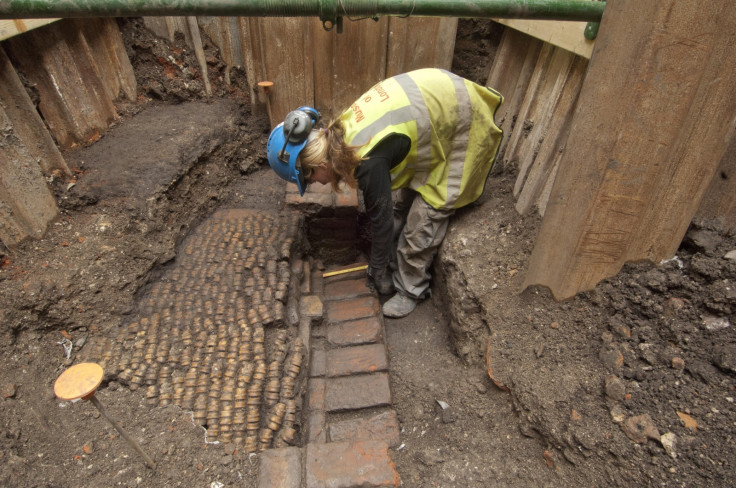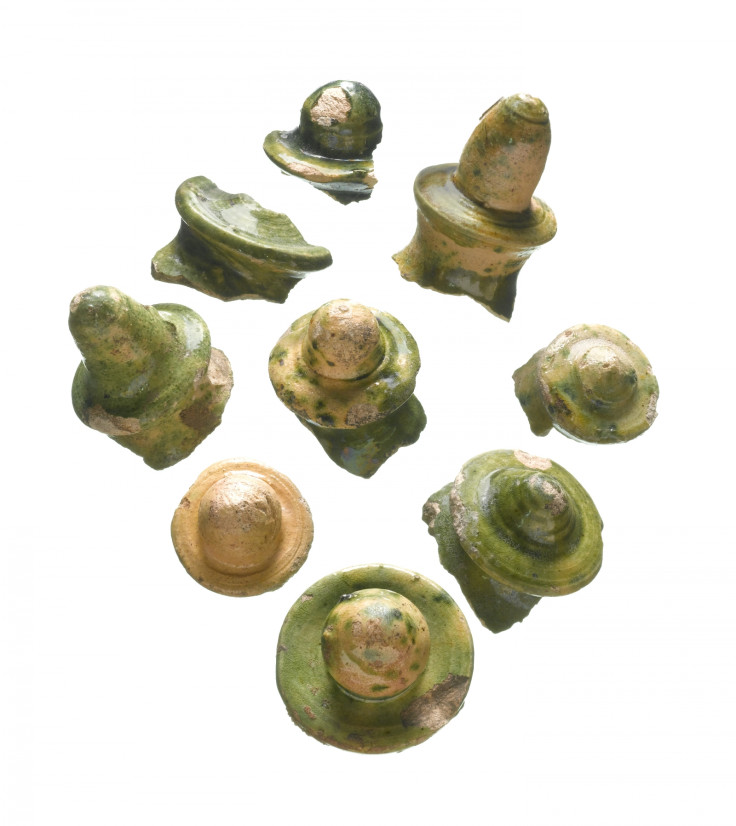Secret passage discovered under stage at Shakespeare's theatre
Archaeologists unearthed money pots used to collect ticket fees and beads and pins from costumes.
After three months of excavation, archaeologists have revealed the unusual layout of William Shakespeare's Curtain Theatre in East London. The original stage has been exposed to show its unusual shape, a passage beneath the stage and backstage areas unlike those found in other Elizabethan theatres.
The secret passage is thought to have been a discreet way for actors to move about the stage without audience members seeing them, Heather Knight, senior archaeologist at the Museum of London Archaeology, told IBTimes UK.

"We found two thresholds of doorways – we thought they were doors to allow the audience access from the yard up to the gallery but now we can see that the doors would actually allow movement underneath the stage, to allow actors to pass from one side of the stage to the other without being seen," says Knight
Strange stage
The stage is much longer than originally thought, at 14 metres long and just under 5m wide.
"This is the first playhouse we've looked at archaeologically where we haven't got that typical thrust stage – like at the modern Globe, where the stage has three sides to it," says Knight. The long, thin stage has a flat front, she says, which opens up new questions about how people moved on and around the stage.
Another quirk of the Curtain lies backstage. These areas of the theatre set it apart from other playhouses in the Elizabethan period, Knight says. Unlike the Globe – where Shakespeare later moved his theatre company – there is no separate area where the actors would have changed their costume, known as a tiring house.
Remnants of theatre paraphernalia around the Curtain have led Knight and her colleagues to believe that it was a purpose-built space for public entertainment. Audience members paid to attend the theatre, as evidenced by fragments of ceramic money boxes at the site, which they say would have been used to collect entry fees. The boxes would have been smashed to release the money in a separate room that became known as the box office.
"Finding evidence for one of the first stages that was specifically built for plays at the end of the dig was hugely exciting and significant," says Knight.


Remains of the day
Other finds at the site include glass beads and pins, which the archaeologists believe are likely to be from actors' costumes. Drinking vessels and clay pipes have been found sprinkled throughout the theatre. "We've got them all over – some from underneath the stage, some from the yard – it's quite difficult to say for some whether they were in a public space or an area inside for the actors."
The archaeologists were excavating the theatre for three months. The remains are now covered by a protective membrane made of a strong, clear textile that prevents solid particles of soil mixing but allows water to pass through, preserving the archaeological site but allowing construction work to continue.

A selection of the finds will be available for the public to see in 2019 in the visitor centre of a new development at the site, The Stage, which is expected to cost £750m.
© Copyright IBTimes 2025. All rights reserved.






















